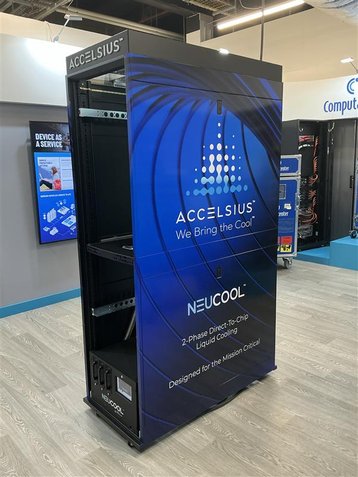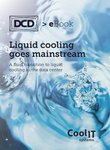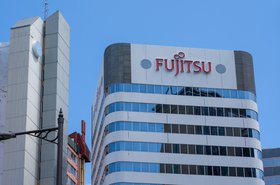Liquid cooling firm Accelsius claims to be able to keep chips cool up to 4,500 watts.
The company recently conducted two tests to demonstrate that its offerings are able to meet the future cooling demands of upcoming high-capacity GPUs.
Accelsius tested a thermal test vehicle representative of a GPU socket. In the experiment, the company said the cold plate was heated to 4,500W before reaching the power limit of the test infrastructure, not the cooling system.
In a second test, Accelsius said it successfully demonstrated the ability of its in-row two-phase CDU to cool a full 250kW rack of AI servers. A four-way H100 server was retrofitted with two-phase cold plates directly contacting the switches, CPUs, and GPUs, and then installed in a "densely configured" 250kW rack.
The CDU was subjected to facility water (PG25) at 20°C, 30°C, and 40°C, (68-104°F) and 375 liters per minute of flow. Even under maximum rack load and using 40°C inlet temperatures, the junction temperature of the hottest GPU remained below Nvidia’s thermal throttle limit (~87°C or 188.6°F).
“We’re showing customers that we can easily meet current performance requirements and scale our performance to meet the needs of the recently announced 600kW racks,” said Dr. Richard Bonner, chief technical officer at Accelsius. “Our R&D team has also prepared us for rapidly evolving chip and server architectures, such as 4,500W TDP sockets and vertically oriented blade servers.”
After around 700W, air cooling for chips becomes increasingly difficult, and liquid-cooling becomes a more suitable option. Nvidia’s Blackwell GPUs can currently operate at up to 1,200W, with the previous-generation H100s scaling up to a thermal design point (TDP) of 700W. AMD’s MI355X operates at a TDP of 1,100W. The recently announced Blackwell Ultra, also known as GB300, is set to operate at a 1,400W TDP.
Accelsius also recently announced a partnership with Computacenter, deploying a NeuCool Thermal Simulation Rack in Computacenter’s HyperScale Integration Center at its UK Headquarters in Hatfield.
The companies said the demonstration rack will provide customers with a hands-on opportunity to explore how NeuCool works and cools IT hardware.
“As demand for AI and high-density computing accelerates, it’s critical that we provide partners with accessible, scalable solutions,” said Josh Claman, CEO of Accelsius. “Having our demonstration rack in Computacenter’s HyperScale Integration Center is a significant milestone in our European expansion, making it easier for enterprises to experience NeuCool firsthand and deploy with confidence.”
Texas-based Accelsius was founded in 2022 by Innventure LLC. The company is commercializing technology developed by Nokia's Bell Labs. Accelsius’ NeuCool technology had been developed for five years by Bell Labs but was not productized. No Bell Labs staff came to Accelsius.
NeuCool’s system sees vaporators (also known as cold plates) mounted directly to targeted hot-spot chips. Dielectric refrigerant flows through the vaporators, where it nucleates into a vapor, which then travels to a CDU and condenses back into a liquid in a closed-loop system, then returning to the vaporator for additional cooling.
Direct-to-chip systems usually rely on water, which has a high heat capacity, but Accelsius is using a dielectric coolant, and allowing it to boil in the circulating system, to remove more heat.




